Art of making traditional Thai lanterns dying out, as younger generation lose interest
The lanterns, which come in various colours and sizes, are unique to northern Thailand, especially in the Chiang Mai province, where the Yee Peng Festival is celebrated towards the end of the year.
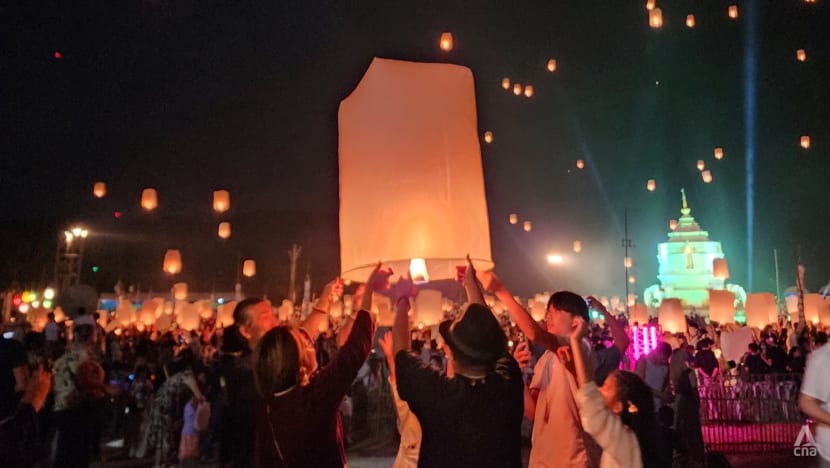
Yee Peng Festival in Chiang Mai, where thousands of lanterns made from paper are released into the sky. People traditionally make private wishes before releasing them. Authorities have also designated areas outside of the city during the festival to release the sky lanterns for safety reasons. (Photo: CNA/May Wong)

This audio is generated by an AI tool.
CHIANG MAI: Ms Konkit Khanapanya has been making lanterns by hand for some 40 years.
But the 53-year-old owner of Khom Mae Bua Lai Kana Panya lantern shop in Chiang Mai is worried that such crafts will end with her generation, as young people are losing interest in them.
“The young only care for things that can give them money. They are not proud of a hand-made product anymore,” said Ms Konkit, who picked up the skills from her mother-in-law.
“All the local knowledge will be gone, like what we are seeing with the elderly using traditional methods, the young won’t know them anymore.”
The lanterns, which come in various colours and sizes, are unique to northern Thailand, especially in the Chiang Mai province, where the Yee Peng Festival is celebrated annually towards the end of the year.
This festival is meant to mark the transition from the gloomy days of the rainy season to the brighter days of the cool season.
YOUNG THAIS LESS KEEN TO CARRY ON ART
Some lanterns are hung up to decorate homes, shops and streets to mark the festival. Others are lit and released into the sky.
But with technological advances and social media distractions, fewer young Thais are keen to carry on the art of making the Yee Peng lanterns, leading to concerns that such traditional Thai crafts could potentially fade away.
Making just one lantern by hand is tedious and can take hours.
It involves skills such as stretching out the fabric to make sure it is sufficiently taut without tearing it, cutting the various paper patterns to decorate the lantern, and pasting the decorations piece by piece.
Even if some young Thais are keen on picking up such lantern-making skills, they are often mocked by their peers.
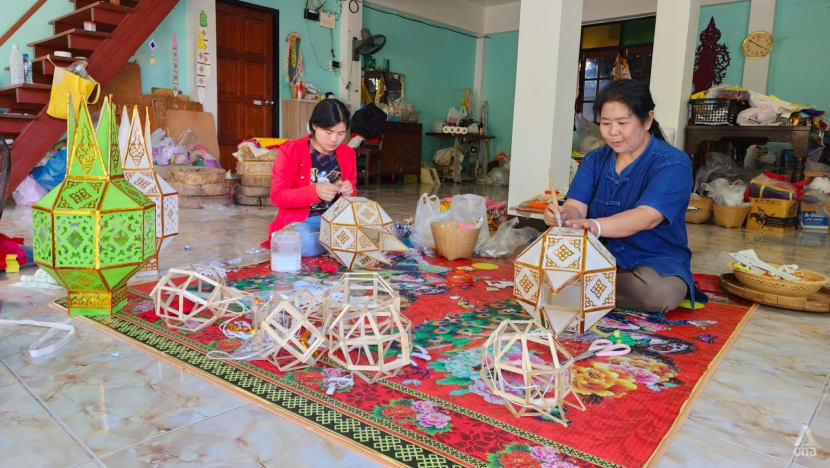
One teenager who is looking to continue his family lantern-making business is 17-year-old Teerasut Boonmuen.
However, there are not many young people who share his views, he said.
“Some of my friends would ask ‘Why are you making these? I don’t really understand’,” he added.
“It’s like they look down on what I’m doing, as something out of style, like why am I wasting time doing something which old people do. They think that it’s not something young people should be doing.”
RELEASING SKY LANTERNS AFFECT AIR QUALITY
Meanwhile, concerns have been raised over the impact that the sky lanterns have on the environment.
Every year, Thailand has to cope with bad air quality contributed by agriculture land fires and vehicle emissions.
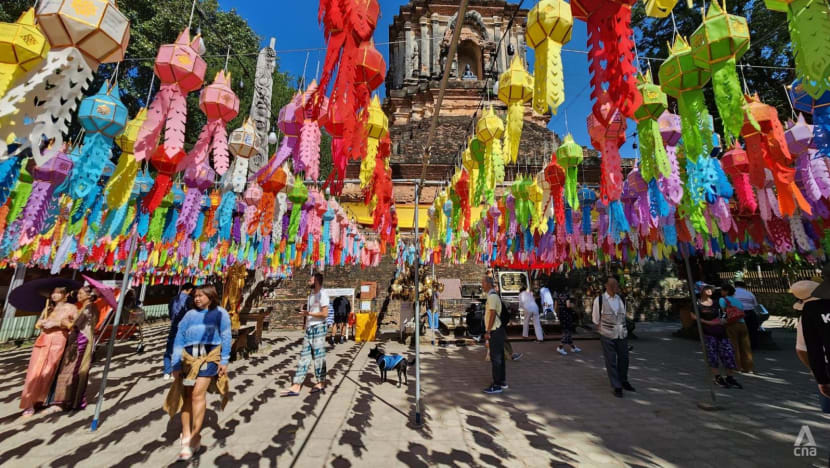
Chiang Mai, in particular, is known to have one of the most polluted air quality in the world, and the release of thousands of lanterns into the sky every year is not helping.
Many people would justify that this is an old tradition, and that releasing the sky lanterns for just a few days will not have much adverse effect on the environment, said Greenpeace Thailand’s country director Tara Buakamsri.
But Mr Tara highlighted the huge number of lanterns floating into the sky as a problem.
“It’s dangerous, it produces toxic emissions, aside from PM2.5 (pollutant levels) that we know of already,” he added.
“So that means it’s adding into an already full carrying capacity of the air system in the region.”
The some 10,000 or more lanterns released into the sky are “also causing air traffic challenges or even causing an accident for residents that have seen lanterns falling from the sky into their household,” said Mr Tara.
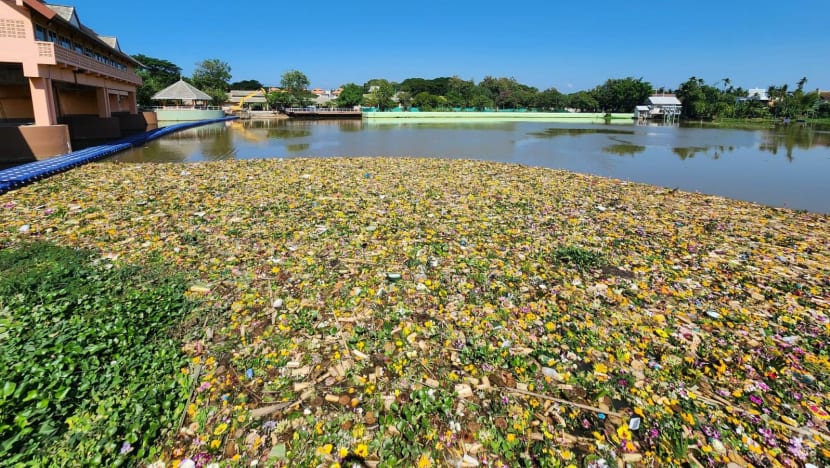
TRADITION CAUSING WATER POLLUTION
Yee Peng Festival is celebrated together with another famous festival Loy Krathong in Thailand. Loy means float, and Krathong refers to a basket or a small vessel.
Thais would usually place the Krathongs on water and symbolically float away their troubles and bad luck.
While it is a tradition that has carried on for generations across the entire nation, the Krathongs have also earned a bad reputation among environmentalists.
Any material put into the river becomes a burden to the ecosystem, said Mr Tara.
“Our river system is already in a coma, in the emergency room. So that means if we want to protect our river, mother nature, (and) ecosystem, we have to find a way to take that out from an emergency situation.”
Each year, the Krathongs eventually end up as a mountain of trash and choke the river.
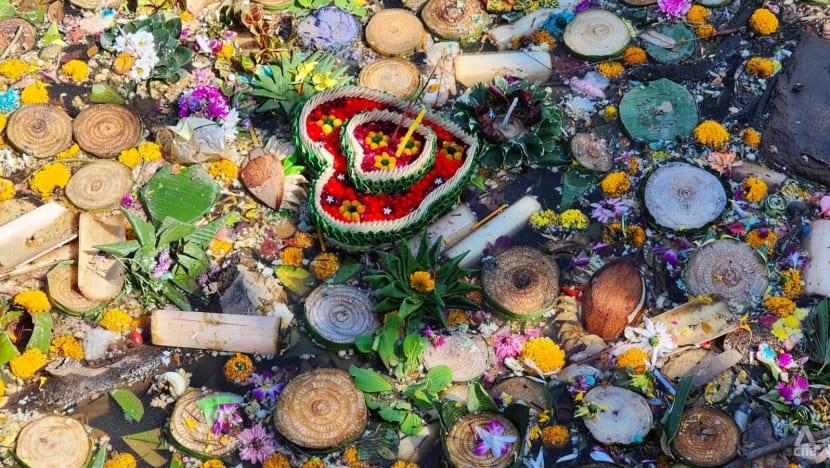
The materials that are used to construct the Krathongs have also been criticised.
While the authorities have banned the use of styrofoam or plastics to make the floats, that has not completely stamped out the practice.
Instead, they are taking alternative action to remedy the situation by pushing for Krathongs that are made from biodegradable materials.
“One thing we are trying to do is to educate the customers that they should choose to buy the eco-friendly Krathongs,” said Mr Saksakul Suprakritanan, deputy director of the Tourism Authority of Thailand’s Chiang Mai office.
“If the customers reject those made with non-environmentally friendly materials, the demand will decrease and the supply will also go down.”
Some municipalities have shared their desire to go green and be carbon neutral, said Mr Tara.
“It’s time for them to incorporate very high-profile traditions like Loy Krathong and Yee Peng into an action plan to reduce our eco-footprint in our ecosystem,” he said.
MAKING TRADITIONAL CRAFTS SUSTAINABLE
The lanterns and Krathongs have been a part of Thai culture for generations, and some people want them to continue - not just to preserve the tradition but also to support livelihoods for many villagers.
Lanna Wisdom School in Chiang Mai teaches students various traditional Thai crafts.
Mr Dhanoos Fongta, a teacher from the school, said better international publicity can help to generate more interest among foreign visitors to the province.
“There are many foreign tourists from both Europe and Asia who have never known about the culture,” he said.
“When they come and see an event, they will know about the tradition. So when there’s an event, there’s a demand for the products which can also help with job creation.”
But confronted with greater environmental consciousness and a lack of interest among young people, these crafts will have to adapt to remain sustainable for generations to come.
















